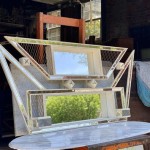Screen Mirroring From a Macbook to a Samsung TV: A Comprehensive Guide
Screen mirroring, the ability to wirelessly display the contents of a device's screen on another display, has become an increasingly convenient feature. This is particularly relevant in both personal and professional contexts. For users of Apple's Macbook and Samsung TVs, screen mirroring offers a versatile solution for sharing content, presentations, or simply enjoying media on a larger screen. While seemingly straightforward, establishing a reliable and high-quality screen mirroring connection requires an understanding of the underlying technologies and the compatibility between the devices involved. This article will provide a detailed exploration of the methods and considerations involved in mirroring a Macbook's screen to a Samsung TV.
The process of screen mirroring essentially involves the Macbook wirelessly transmitting its display output to the Samsung TV, which then renders that output on its screen. This transmission relies on specific protocols and technologies that both devices must support. Understanding these technical requirements is crucial for troubleshooting potential issues and ensuring a seamless mirroring experience.
Understanding the Key Technologies: AirPlay and Alternatives
One of the primary technologies for screen mirroring between Apple devices and compatible TVs is AirPlay. Apple's AirPlay protocol is designed for streaming audio and video content, and mirroring the display is a natural extension of this functionality. AirPlay utilizes a secure and relatively efficient wireless connection, typically over Wi-Fi, to transmit data between devices. Samsung TVs, particularly newer models, often have integrated AirPlay 2 support, allowing them to seamlessly receive content from Apple devices, including Macbooks. To use AirPlay effectively, it is imperative to ensure that both the Macbook and the Samsung TV are connected to the same Wi-Fi network. This requirement facilitates the discovery of the TV by the Macbook.
However, if AirPlay is unavailable or proves problematic, alternative screen mirroring solutions exist. These alternatives often involve third-party applications or protocols that emulate the functionality of AirPlay. These applications typically rely on a different underlying technology, such as Miracast or DLNA (Digital Living Network Alliance), to establish the wireless connection. While these alternatives may offer a workaround for devices lacking native AirPlay support, they might not provide the same level of performance or integration as AirPlay. Latency, or the delay between action on the Macbook and its appearance on the TV screen, can be more pronounced with these alternative methods. Compatibility is also a key consideration, as not all third-party applications are universally compatible with all Macbook and Samsung TV models.
Another factor to consider is the security implications of using third-party mirroring applications. It is crucial to select reputable and well-established applications to minimize the risk of malware or data breaches. Prior to installing any third-party software, users should thoroughly research the application's publisher and user reviews to assess its legitimacy and security.
In addition to protocol compatibility, bandwidth is critical for screen mirroring, especially when displaying high-resolution content or video. A stable and robust Wi-Fi network is crucial for maintaining a smooth and uninterrupted mirroring experience. Congestion on the Wi-Fi network, caused by multiple devices simultaneously streaming or downloading data, can lead to buffering, lag, and even disconnections. To mitigate these issues, users should consider optimizing their Wi-Fi network by using a 5 GHz band if available, reducing the number of connected devices, and ensuring that the router is located in a central location with minimal obstructions.
Step-by-Step Guide to Mirroring via AirPlay
Assuming that both the Macbook and the Samsung TV support AirPlay 2 and are connected to the same Wi-Fi network, the following steps outline the process of initiating screen mirroring:
- Enable AirPlay on the Samsung TV: Navigate to the TV's settings menu. The exact path will vary depending on the model, but typically, it can be found under "General," "Apple AirPlay Settings," or a similar category. Ensure that AirPlay is toggled to the "On" position. You may also need to configure security settings, such as requiring a password for AirPlay connections.
- Open System Preferences on the Macbook: Click on the Apple menu in the top-left corner of the screen and select "System Preferences."
- Locate the "Displays" Preference Pane: Within System Preferences, find and click on the "Displays" icon.
- Select the AirPlay Display Option: In the Displays preference pane, look for the "AirPlay Display" dropdown menu. If the Samsung TV is discoverable on the network and has AirPlay enabled, it should appear as an option in this menu. Select the Samsung TV.
- Initiate Mirroring: Once the Samsung TV is selected, the Macbook's screen will begin to mirror onto the TV. The "AirPlay Display" menu will now offer options for how the displays are arranged and used. You can choose to mirror the display, extend the display (treating the TV as a second monitor), or stop AirPlay altogether.
- Adjust Display Settings (Optional): Within the Displays preference pane, you can adjust the resolution, refresh rate, and other display settings to optimize the mirroring experience. The optimal settings will depend on the capabilities of the Samsung TV and the desired viewing experience.
Once screen mirroring is active, the Macbook's screen will be visible on the Samsung TV. Actions performed on the Macbook will be reflected on the TV screen, allowing you to share presentations, watch videos, browse the web, or perform any other task. To stop screen mirroring, simply return to the "AirPlay Display" menu in System Preferences and select "Off" or disconnect the AirPlay connection.
In some instances, the Samsung TV may not automatically appear in the AirPlay Display menu. If this occurs, ensure that both devices are connected to the same Wi-Fi network, that AirPlay is enabled on the TV, and that the Macbook's Wi-Fi connection is stable. Restarting both the Macbook and the Samsung TV can also resolve connectivity issues.
Troubleshooting Common Screen Mirroring Issues
Despite following the correct procedures, screen mirroring issues can occasionally arise. Here are some common problems and their potential solutions:
- No AirPlay Option: If the "AirPlay Display" option is not visible in the Displays preference pane, it could indicate that the Macbook is not detecting any AirPlay-enabled devices on the network. Ensure that the Samsung TV is powered on, connected to the same Wi-Fi network, and has AirPlay enabled in its settings. Check the Macbook's Wi-Fi connection to ensure it is stable and connected to the correct network. MacOS may also require an update to the latest version to ensure AirPlay functionality is working correctly.
- Poor Video Quality or Lag: If the mirrored image is blurry, pixelated, or experiences significant lag, it could be due to a weak Wi-Fi signal or excessive network congestion. Move the Macbook and the Samsung TV closer to the Wi-Fi router to improve signal strength. Reduce the number of devices connected to the Wi-Fi network to reduce congestion. Consider using a 5 GHz Wi-Fi band, which typically offers better performance than the 2.4 GHz band. Adjust the display resolution on the Macbook to a lower setting to reduce the amount of data being transmitted.
- Intermittent Disconnections: If the screen mirroring connection frequently disconnects, it could be caused by interference from other wireless devices or background processes on the Macbook. Disable Bluetooth on the Macbook if it is not being used, as Bluetooth can sometimes interfere with Wi-Fi signals. Close any unnecessary applications running on the Macbook to free up system resources. Update the firmware on both the Samsung TV and the Wi-Fi router to ensure optimal performance and compatibility.
- Audio Issues: If the audio is not playing on the Samsung TV, check the audio output settings on the Macbook. In System Preferences, go to "Sound" and select the Samsung TV as the output device. Ensure that the volume is turned up on both the Macbook and the Samsung TV. Some applications may have their own audio output settings that need to be configured.
- Firewall or Security Software: Some firewall or security software on the Macbook may be blocking the AirPlay connection. Temporarily disable any firewalls or security software to see if that resolves the issue. If it does, configure the firewall or security software to allow AirPlay connections. Refer to the documentation for the firewall or security software for instructions on how to do this.
By systematically troubleshooting potential issues, users can often resolve screen mirroring problems and enjoy a smooth and reliable connection between their Macbook and Samsung TV.
In conclusion, mirroring a Macbook screen to a Samsung TV is a valuable capability for various applications, from presentations to entertainment. While AirPlay offers a streamlined and integrated experience, alternative solutions exist for devices that lack native AirPlay support. A solid understanding of the underlying technologies, a well-configured Wi-Fi network, and methodical troubleshooting are crucial for maximizing the performance and reliability of screen mirroring connections.

Best And Easy Ways To Mirror Mac Samsung Smart Tv

How Do I Mirror My Samsung To Mac Wireless With One App

6 Ways How To Mirror Your Macbook Samsung Tv

How To Mirror Mac Screen Samsung Tv Without Apple

How Do I Mirror My Samsung To Mac Wireless With One App

How To Screen Mirror Macbook Samsung Tv

How To Mirror A Mac Tv Osxdaily

14 Fixes For Screen Mirroring Mac To Samsung Tv Not Working Techwiser

How To Mirror Macbook Samsung Smart Tv Screen Wirelessly

How To Airplay Mirror Mac Samsung Smart Tv Without Apple Redmond Pie








